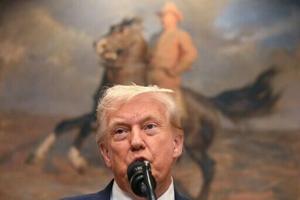The global economic landscape teeters on the brink as the clock rapidly counts down to the implementation of significant tariff hikes, a cornerstone of Donald Trump’s assertive trade policy. With Washington’s deadlines fast approaching, governments worldwide are scrambling to secure last-minute agreements to avert the severe financial repercussions promised by the escalating international trade wars.
Just days before the higher levies were set to take effect on a multitude of economies, President Trump moved decisively, not only confirming previously threatened duties but also unveiling fresh trade arrangements that underscored the dynamic nature of his administration’s approach to global commerce. This period of intense negotiation highlights the profound shifts in Trade Diplomacy as nations navigate complex economic pressures.
As the crucial Friday deadline for increased levies on goods from various trading partners loomed, the U.S. President made a series of pivotal announcements. These included a finalized trade deal with South Korea, offering a less punitive tariff rate, alongside the imposition of new duties specifically targeting Brazilian and Indian imports, underscoring the broad reach of the Donald Trump Trade Policy.
Further demonstrating the expansive nature of these economic maneuvers, President Trump signed an order to enact a previously announced 50 percent tariff on certain copper products. Concurrently, his administration moved to end a longstanding tariff exemption for low-value shipments originating from abroad, signaling a comprehensive recalibration of import regulations impacting International Trade Wars.
These impending tariff hikes, initially declared in April, stemmed from a broader package where Trump had imposed a blanket 10 percent levy on goods from nearly all trading partners, citing what he deemed unfair trade practices. The intended escalation of this rate to varying levels for major economies like the European Union and Japan had been twice postponed, a direct response to gyrations in the global financial markets, revealing the sensitivity of these actions.
Amidst the widespread uncertainty, several key nations and blocs have successfully brokered initial agreements with Washington, securing more favorable, less punishing conditions. Britain, Vietnam, Japan, Indonesia, the Philippines, the European Union, and South Korea represent a growing list of entities that have engaged in high-stakes Trade Diplomacy to mitigate the US Tariffs Global Impact.
While President Trump has consistently championed his duties as a significant driver of government revenues, economists have issued stark warnings about the broader Economic Implications. They contend that elevated tariffs carry the inherent risk of fueling an uptick in domestic inflation and exerting downward pressure on overall economic growth, potentially altering long-established consumption patterns across the nation.
Despite these expert cautions, the direct effect on consumer prices has remained relatively limited to date. However, analysts caution that this situation could become considerably more pronounced as businesses exhaust their existing inventories and are compelled to pass on an increasing proportion of these accumulated costs directly to consumers, significantly impacting the Global Economic Outlook.
The escalating International Trade Wars under Donald Trump Trade Policy continue to reshape global commerce, as evidenced by the 25 percent duty on Indian goods—a slightly lower rate than initially threatened after talks failed—and the 50 percent tariff on Brazilian goods, justified by concerns over national security. These multifaceted actions underscore the ongoing challenges and profound US Tariffs Global Impact on the intricate web of international relations.






Leave a Reply